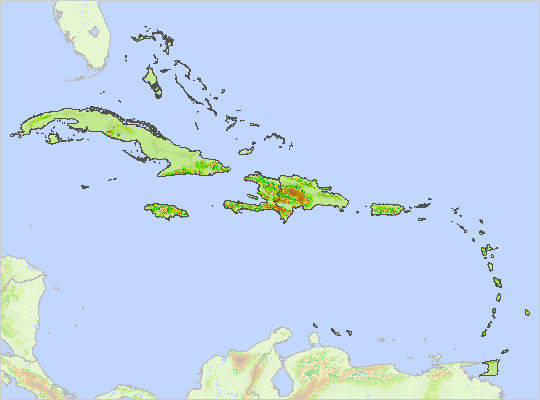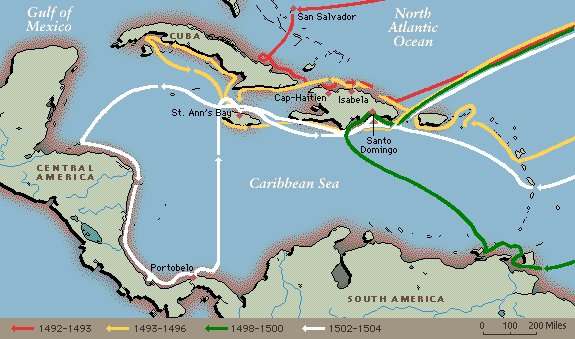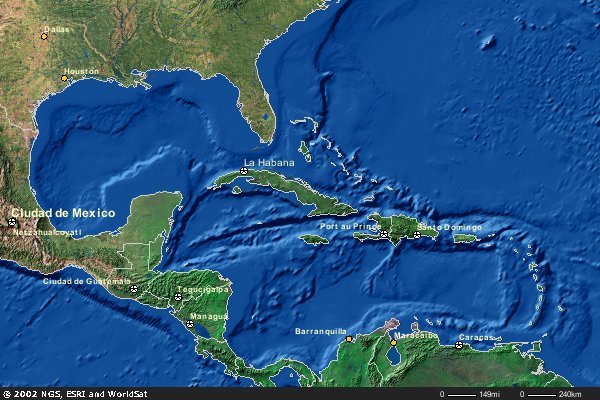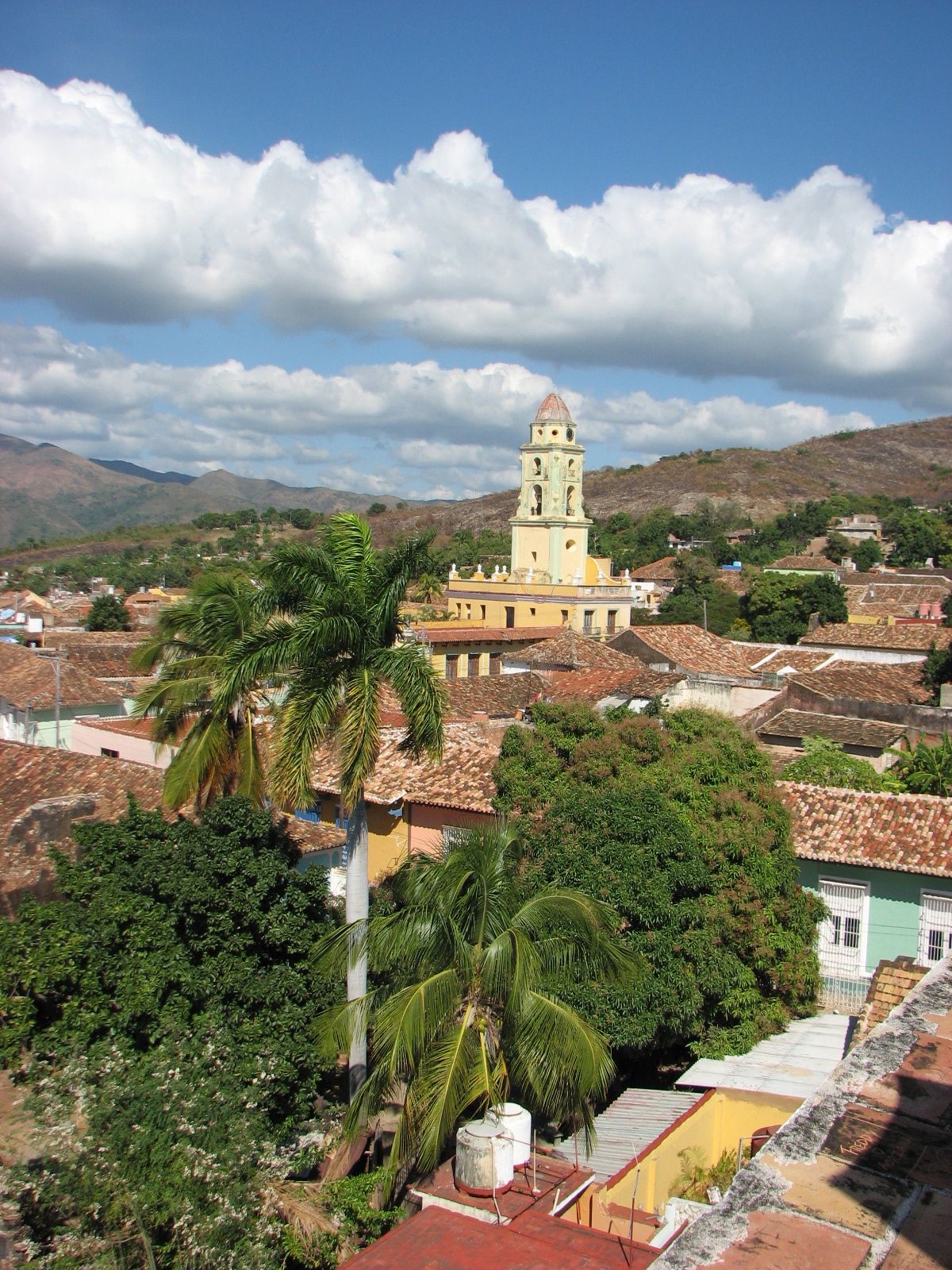Ecological History
Derek Walcott and the Bardic meaning & misunderstanding of the Antilles
Alfred Crosby & ecological history on the significance of the Caribbean invasion 1492-1522.
Classic dualism
1. Clarify - clarity what facts, evidence, and interpretation an author tells his readers.
2. What four things does Alfred Crosby say distinguishes ecology from history that so reveals Columbus importance?
Two versions of history as a practice of informing us about the past:
2.1
2.2
Characteristics of Crosby:
narrative, or descriptive and argumentative, or contentious.
Walcott & Crosby are two of seven authors
who we examine because either their research, facts, opinions and concepts reveal mistaken understanding or contingency.
The ecological historian is interested in the contingent significance, paradoxical character, and enduring influence of the West Indies and Central America on the world's past. These misunderstood facts of history and the viewpoint they reveal can only be seen from an ecological perspective.
That perspective reveals that nothing like the last five-hundred years had ever before occurred in terms of population growth, nutritional revolution, surplus, and plenty; at least not since the climate change associated with the retreat of the glaciers from Europe and America 10,000 years ago.
Start here:
Index of the book Germs, Seeds and Animals by Crosby
Crosby talks about two approaches to history.
The Columbian exchange described in brief.
As you reread Crosby what six or more concepts stand out as important to explaining what occurred as a consequence of the Columbian exchange?
1
2
3
4
5
6
A page that links to important sites for the class is also: here -
Crosby, on the importance of the Caribbean
The Caribbean as a crucible of world civilization.
1, Demographically the population in Central America, the West Indies, and in the world changed to this day.
2, Nutrition, food exchanges between Eurasia, Africa and the Americas altered the balance of population throughout the world.
3, Domesticated and feral animals from Europe so altered the ecology of the lowlands and adjusted ironically well to the uplands that pigs, chickens, sheep, horses and cows thrived in the Americas.
4, Pestilence from pathogens that caused diseases to which the indigenes (Aboriginal Amerindians such as Taino, Arawak, Ciboney, and Carib) had no resistance due to biological isolation from Asian populations.
5, Economic markets in Europe benefitted by the influx of Mexican silver, South American gold, mainland and island sugar production, slaves, hides, animal skins (beaver and deer) and tobacco trade making new commercial and landed elites.
6, Intellectual exhaustion of Ancient ideas amid a flood of new geographical and biological discoveries altered the cosmology and ideology of the dominant European nation's whose shared cultural understanding of the natural world changed drastically replacing the authority of Aristotle with experimental observations.
7, The measure and metric of the globe itself was altered from 1420-1522.
8, Astronomy would never again be what it had been before 1600.
9, Money, Europeans actually had coinage (silver and gold) with which to purchase luxuries from China, India and the spice islands of the Eastern Pacific.
10, The Chinese gained nutritional food supplies, gold, silver, and technological advantages.
Can you make a case that the Columbian exchange is unimportant? Why not?
![]()
"In 1291, the Crusaders lost Acre, the last Christian stronghold in the Holy Land, and, coincidently, two Genoese brothers, Vadino and Ugolino Vivaldi, sailed out past Gibraltar into the Atlantic with the intention of circling Africa. Not surprisingly, they were never seen again."
p. 71.
"The first of a number of successes, explosive successes, in the production of sugar followed. By 1455, Madeira's annual output was over 6,000 Arobas , and the first sugar was exported from the island to Bristol, England the next year."
p. 77.
The closing of the Ottoman Empire to European trade is one of two facts Crosby alludes to above when viewed in historically reversed order (1445 and 1291) reveal the tentative character of European expansion westward and the time it had taken to establish a threshold of colonialism in an originally non European terrain. It had taken 160 years, more or less, to create a viable economy in these foreign, yet proximate Atlantic islands. In a similar span of time that elapsed after 1492 in the West Indies, those more distant islands underwent a revolution from which the Americas never recovered. A revolution that established Central America and the Indies as the richest European colonies had occurred within a generation but at a human cost unmatched since the failure of the Crusades. How this transformation of people, ecology, culture, biology and economy transpired and endured is the core of this history course.
City & country of the Caribbean port of Trinidad in southern Cuba, settled in the 1500s.
"In the nineteenth century, the Neo-European populations soared not only because of immigration but also because their resident populations were enjoying the highest rates of natural increase these countries would ever achieve. Death rates were hearteningly low, and food plentiful and good by Old World standards, and the Neo-Europeans were gratefully fruitful and they multiplied. In North America in the eighteenth century and early nineteenth centuries, the fertility of the Neo-Europeans was among the highest ever recorded anywhere, as high as fifty to fifty-seven births per thousand inhabitants per year."
Crosby, Ecological Imperialism, p. 303.
" . . .the total value of all the agricultural exports in the world in 1982 was $210 billion. Of this the United States, Canada, Argentina, Uruguay, Australia, and New Zealand accounted for $64 billion, or a little over 30 percent. They account for even more of the world's most important crop, wheat."
"The Neo-Europes' share of world grain exports – in fact, North America's share alone – is greater than the Middle East's share of petroleum exports."
p. 306.
Ours and their understanding of the world as a biosphere, "It is an understanding formed by their own experience of one to four centuries of plenty, a unique episode in recorded history."
What had been considered miraculous in ancient times, "in the New-Europes it is expected."
p. 307.
In 2010, for example the United States alone produced 38 percent of the corn for grain, 34 percent of the soybeans, and just over 9 percent of the world's wheat. With respect to exports the US exported over half the corn in the world, 44 percent of the soybeans and 41 percent of the cotton in world trade. About one fifth of all the agricultural products grown in the United States are exported. These include significant crops of native or indigenous origin.
US Bureau of the Census. "Agriculture" Selected Commodities & Export data. 2012.
U.S. Census Bureau, Statistical Abstract of the United States: 2012, p. 548.

Ecological history is concerned with terrain, hydrology, economic geography, population, disease, health, and natural areas when viewed in light of the food and energy supplies utilized by people for societies to endure. "By focusing on human universals like death and disease, his studies highlight the epidemic rather than the epiphenomenal."
p. vii, Kevin Reilly, Introduction
Alfred Crosby, Germs Seeds & Animals
crucible,
literal – meaning a vessel of metal or ceramic where under high temperature liquid metals are assayed, mixed, or reduced. Used in chemistry to hold heated materials.
figurative – meaning an occasion, place or situation where one of these two things happen:
- one undergoes a test or trial.
- where different elements come together to produce something new, or never before seen.
origins – [Etymology] Latin, cross, crucifixion -- to fix to a cross.
Bardic, the work of a bard, or a poet, traditionally one reciting epics and associated with a particular oral tradition, in this case the great men who "discovered the world and conquered a savage infested American frontier of empty spaces ready to settle for God and country.
Alfred W. Crosby's Books,
 Ecological Imperialism: The Biological Expansion of Europe, 900-1900. London: Cambridge University Press, 1982.
Ecological Imperialism: The Biological Expansion of Europe, 900-1900. London: Cambridge University Press, 1982.
Alfred Crosby, Germs, Seeds & Animals. Armonk, New York: M.E. Sharpe, Inc.], 1994.
The Columbian Exchange:
Germs, Seeds, and Animals:
![]()
Two Dominant Approaches to the past have emerged: ecological versus epic (Bardic)
Biology, culture and history compared using Columbus journals, 1492-1517.
Crosby's underlying assumptions from Germs Seeds and Animals.Crosby's ecological history of European hegemony in the world.
How did Europeans, especially coastal nations, succeed in subduing the world from 1450 until 1850?
Crosby's account, list of preindustrial Famines.
Crosby's chapters for Germs, Seeds, and Animal.
- Visualizing information can be cool.
- Geographical data to visualize from GeoHive.
- IMF visual data mapping.
- Historical map collections available: University of Texas Library of the Americas
Crosby's perspectives.
The ecological realities of Española, Yucatan, the Americas before and after Spanish Settlement 1493-1600.
1, Demographically the populations in Central America, the West Indies, and in the world was altered in the amount of people in each region and the ethnic composition of the Americas even to this day.
2, Nutrition, food exchanges between Eurasia, Africa and the Americas altered the balance of population throughout the world cause Eurasians to experience a population explosion.
3, Domesticated and feral animals from Europe so altered the ecology of the lowlands and adjusted ironically well to the uplands that pigs, chickens, sheep, horses and cows thrived in the Americas.
4, Pestilence from pathogens that caused both acute and chronic diseases which were curable and incurable (such as measles, mumps chickenpox and smallpox from domesticated animals) to which the indigenes (Aboriginal Amerindians such as Taino, Arawak, Ciboney, and Carib) had no resistance due to their prolonged biological isolation from Asian & European populations.
5, Commercial markets in Europe benefitted by the influx of Mexican silver, South American gold, mainland and island sugar production, slaves, hides, animal skins (the hide and tallow trade & beaver, otter, and deer skins) and tobacco trade making new commercial fortunes in Europe and landed elites on American plantations, encomiendas, and rancheros.
6, Intellectual exhaustion of Ancient (Aristotle) ideas amid a flood of new geographical and biological discoveries altered the cosmology and ideology of the dominant European nation's whose shared cultural understanding of the natural world changed drastically replacing the authority of Galen, in medicine, Aristotle in biology, and Ptolemy in geography and astronomy with experimental observations in these fields.
7, Ethical confusion: Bartoleme de las Casas, a Spanish colonist to Española, a Dominican priest, founder of a utopian community, and first Bishop of Chiapas, who wrote the Laws of the Indies, died in 1566. He is an example of opposition to the ill treatment of native peoples because he recognized they were people, not animals, possessing divine souls worthy of salvation.
8, The measure & metric of the globe itself was altered from 1420-1522; the earth was suddenly more than it had ever been before.
9, Astronomy would never again be what it had been before 1600. The old earth centered system was replaced by the "solar system," with the Earth as the third planet of six orbiting the sun.
10, Money, Europeans actually had coinage (silver and gold) with which to support currency used to purchase luxuries from China, India and the spice islands of the Eastern Pacific. Wealth disparities disrupted the old medieval order based on horses, land, serfdom, and nobility.
11, The Chinese & Indonesians gained nutritional food supplies, gold, silver, and technological advantages that increased their population and wealth.
12, Slavery and the slave trade created an permanent under class, exacerbated ethnic prejudice, promoted racism based on skin complexion, and enriched the European commercial classes.
13. The ecology of the planet, long dominated by post-Ice Age isolation and some ongoing exchange in Eurasia, became less distinctly different, or more homogenized. This led to a re-population of the "lands of the demographic takeover," by similar kinds of insects, grasses, herbivores, microbes, and people.
September 21, Crosby, The Columbian Exchange. The Revolution, pp. 208-221.
Lists | Three ways to arrange & order | Revolutionary | Question | Evidence | Summary
What did we do?
1) Compared and contrasted an ecological and an economic set of impacts from lists of how the Columbian Exchange was a revolutionary event in world history.
2) Began to assemble our collection of evidence into a coherent statement of logically related ideas.
3) Become better prepared to discover arguments in Crosby that relate to the essay you are writing on the importance of the Columbian Exchange.
Can you make a case that the Columbian exchange is unimportant? Why not?
Start to write (Find an argument in the Crosby readings): Restate and explain what he is contending.






